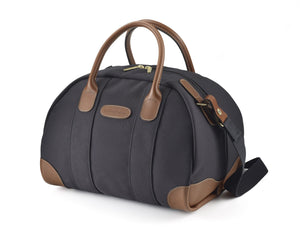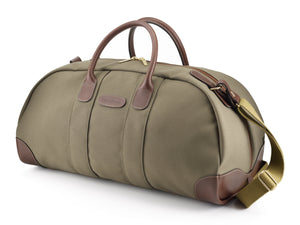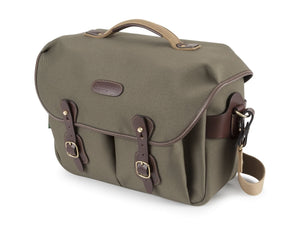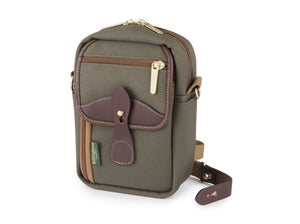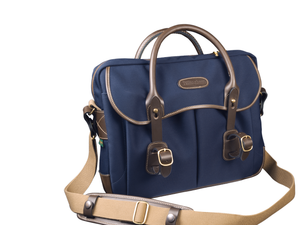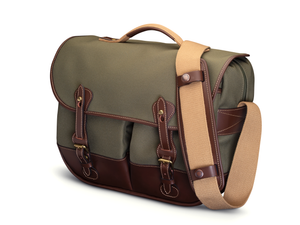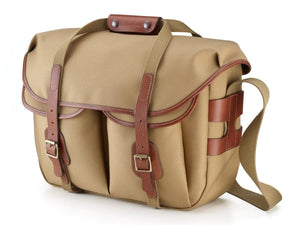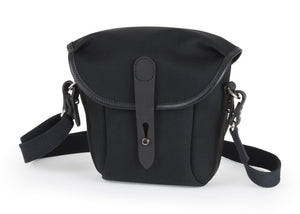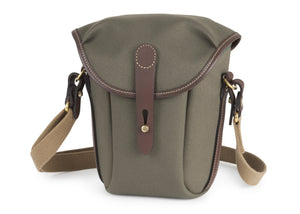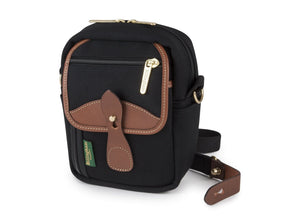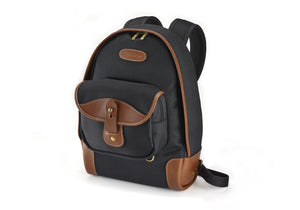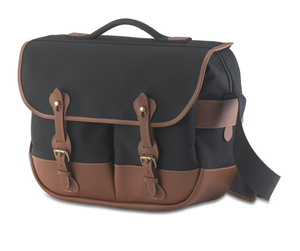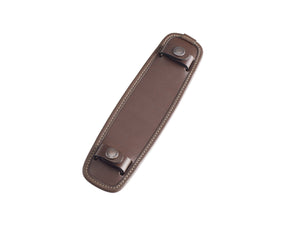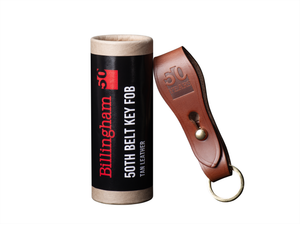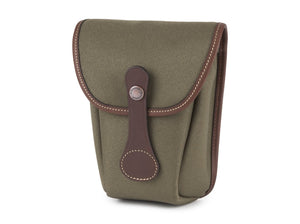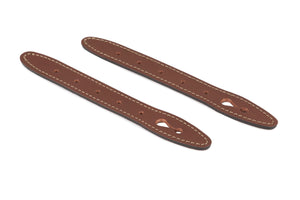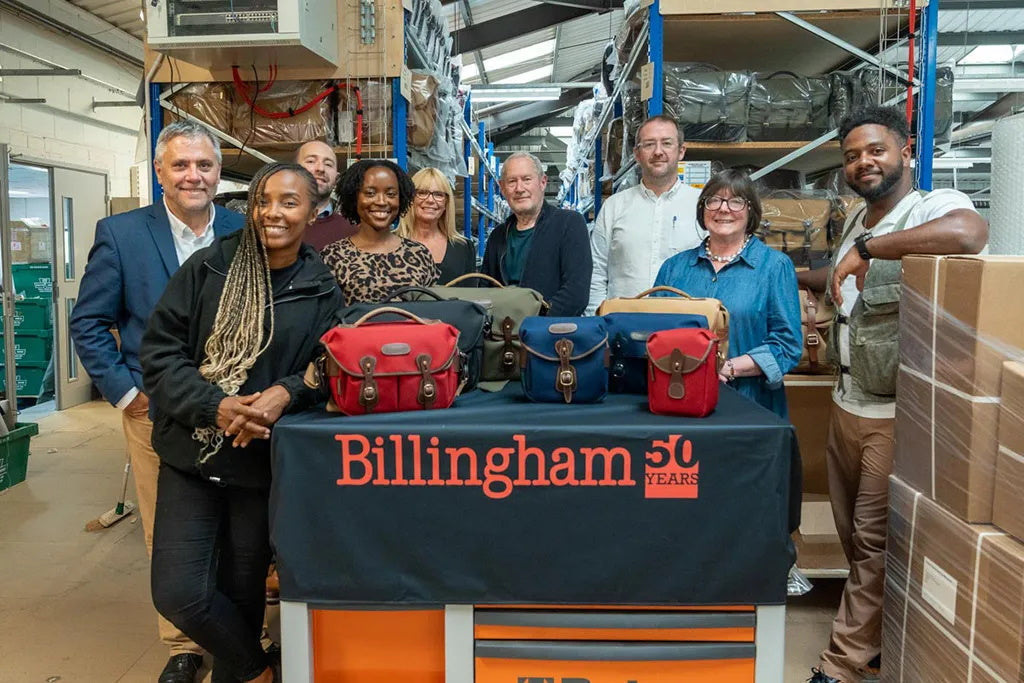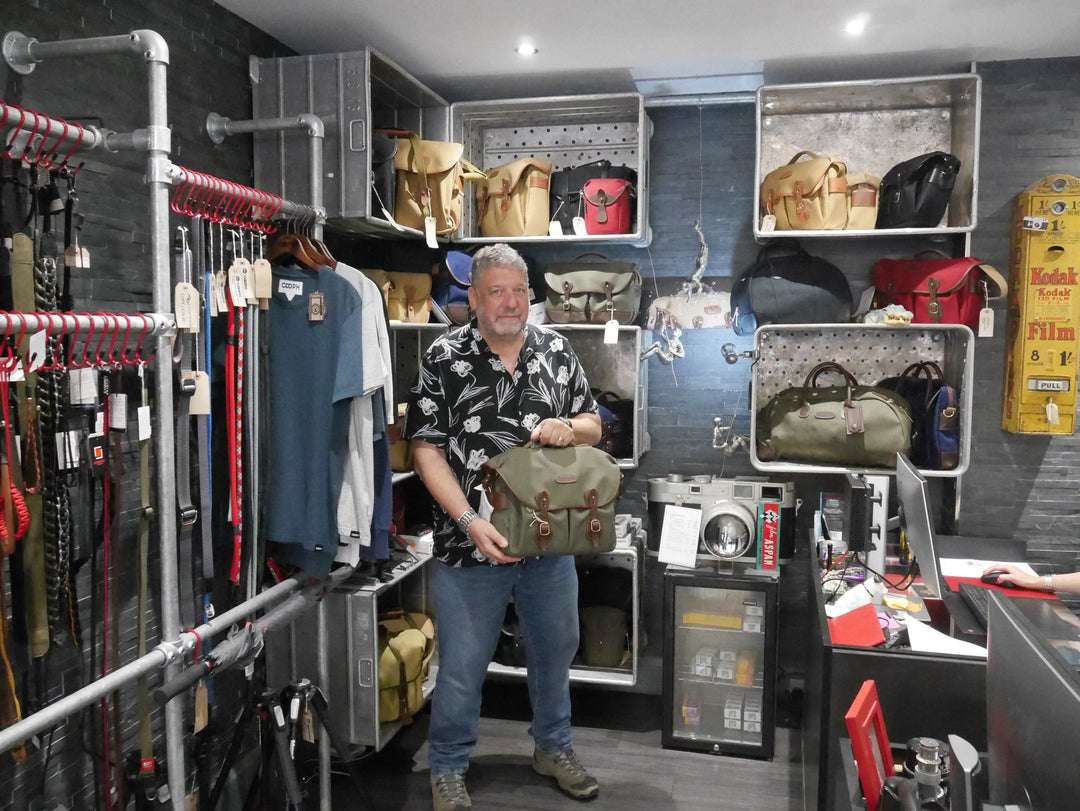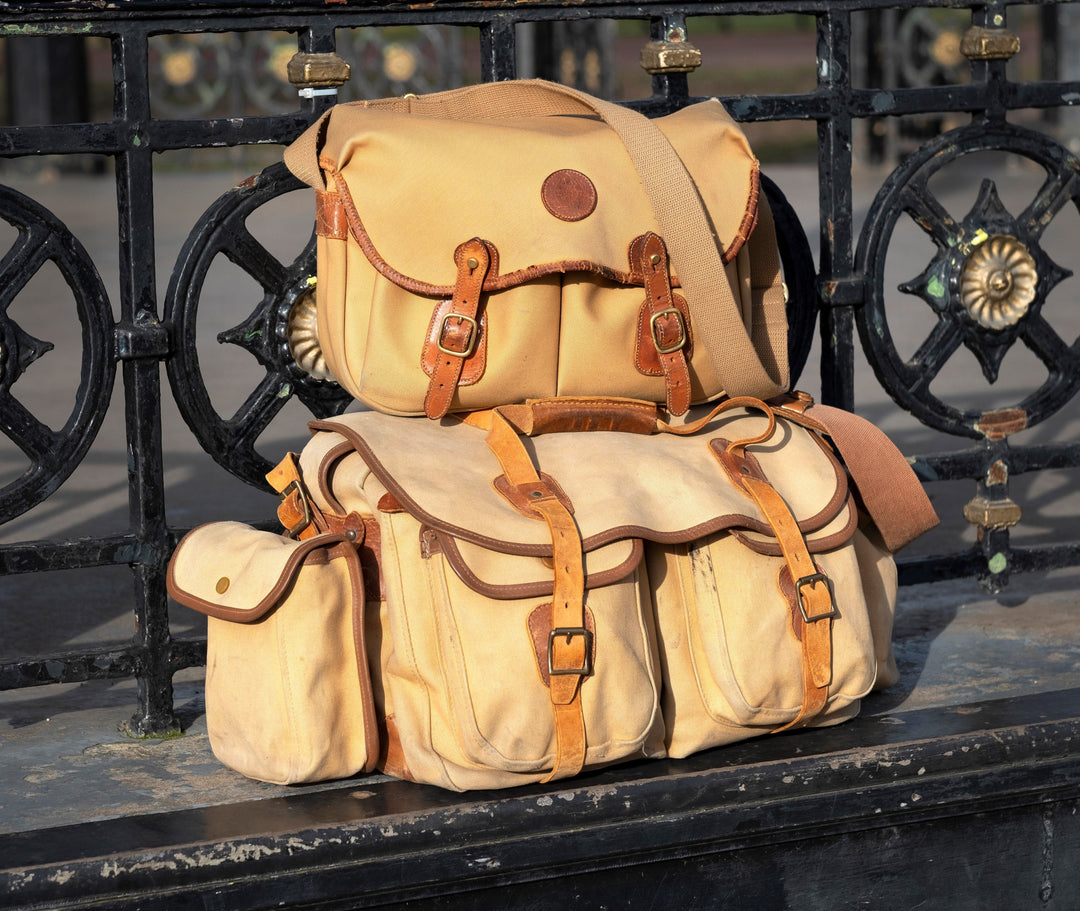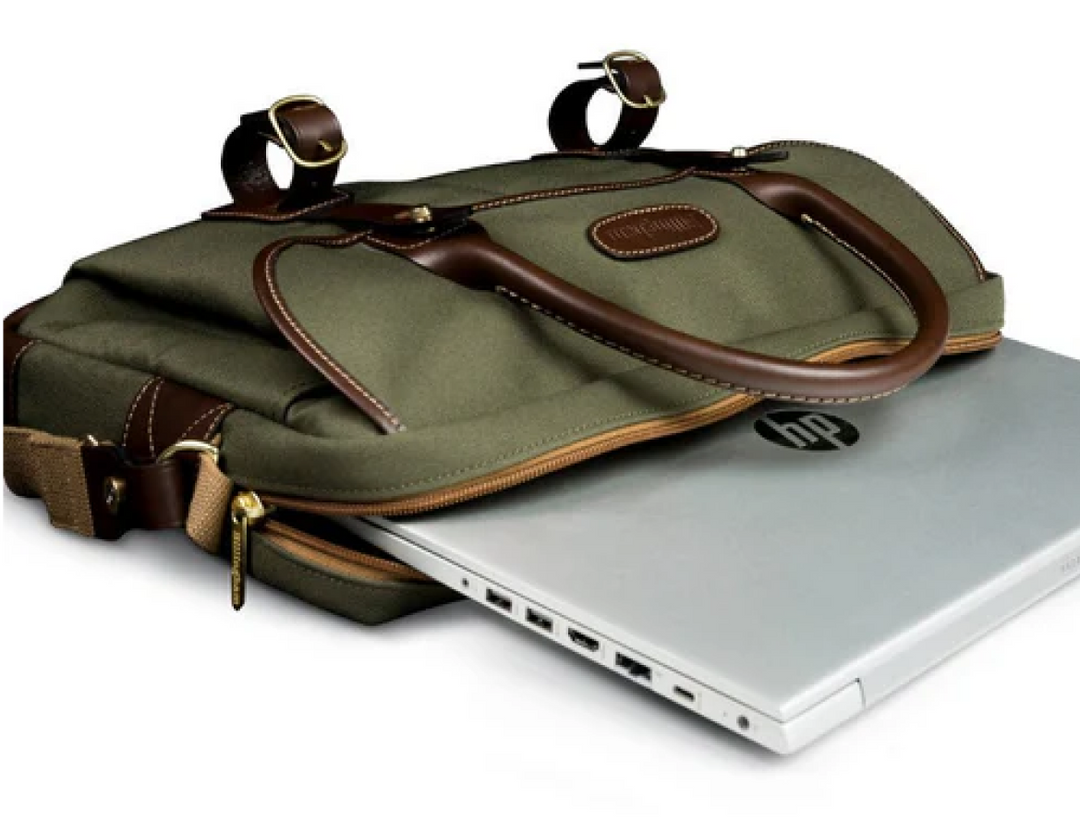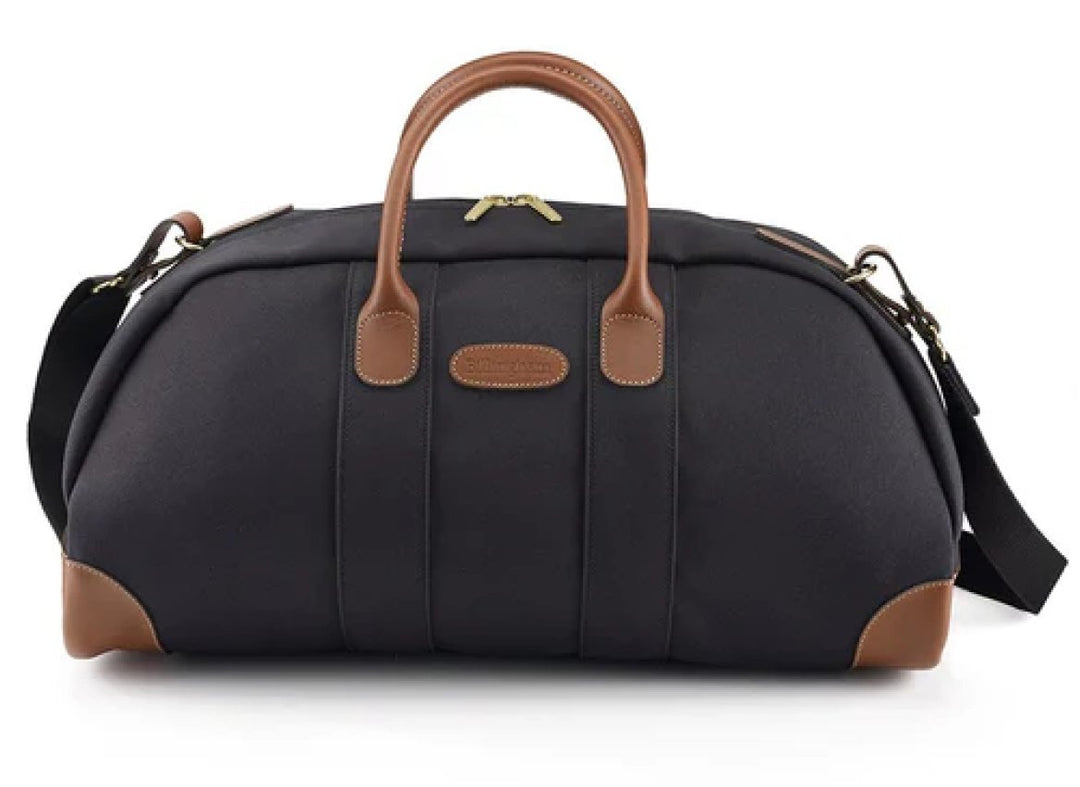Chris Johnson - Skateboarding and Beyond
Based in Worcestershire, England Chris Johnson first picked up a camera in order to capture his friends within his local skate scene. In 2009 he was invited to take on the role of Senior Photographer at Sidewalk Magazine, Britain’s longest running Skateboard publication. Since then his work has broadened to include a wide range of portraiture, documentary, commercial and wedding work. We caught up with him recently to discuss how he got started and to find out about his interesting career.
 Chris on location during an outdoor clothing campaign in Pembrokeshire with his Billingham Hadley Pro 2020 Camera Bag
Chris on location during an outdoor clothing campaign in Pembrokeshire with his Billingham Hadley Pro 2020 Camera Bag
Can you tell us about yourself, your background and where your photographic journey began?
I am a photographer living in Malvern, Worcestershire with my wife and our two sons. My photographic journey began in the late 1990’s when a friend I’d met at Sixth Form College began documenting our lives as we were growing up skateboarding. Inspired and with a desire to be able to create my own memories I headed off to Jessops and bought an Olympus Mju ii.
A few years later and dealing with some injuries from skateboarding, I needed some time to recover but still wanted to be actively involved in the scene, so I became the guy with the camera. Frustrated by the limitations and lack of control of the Olympus point and shoot, I upgraded to an entry level Canon SLR kit and began to take things a little more seriously.
 Tom Harrison smith grind in Warsaw, Poland for the cover of Sidewalk Magazine – Photo by Chris Johnson.
Tom Harrison smith grind in Warsaw, Poland for the cover of Sidewalk Magazine – Photo by Chris Johnson.
Who or what inspired you to take photography seriously enough to make it your career?
I didn’t really look at photography as a career option early on as no one I knew had really gone down that path at the time. I was just obsessed with trying to capture everything that was happening around me and attempting to get my photos looking like those that were in the skateboard magazines. Over time, I began to realise the things I liked the most about particular images and drew on those for inspiration moving forward.
 Nick Stansfield switch kickflip in Copenhagen, Denmark during an editorial project with Volcom clothing. Keeping things simple with a telephoto lens and high contrast black and white – Photo by Chris Johnson.
Nick Stansfield switch kickflip in Copenhagen, Denmark during an editorial project with Volcom clothing. Keeping things simple with a telephoto lens and high contrast black and white – Photo by Chris Johnson.
Did you study photography or have formal training?
I’ve never been good at learning in formal, theoretical environments, I need to work things out by making mistakes. That’s what those early years were all about; it was exciting and really addictive. You need to put the time in and make the mistakes for that theory to mean anything and to see the effects first hand.
The first part of your career was centered around editorial skateboard photography for print media; Sidewalk Magazine, in particular. How did you go from shooting with your friends to working as the Senior Photographer for a national magazine with such a rich history?
Things evolved organically, as time went on, my relationship with the magazine grew stronger and their trust in my work with it. I was given the green light to approach brands to set up trips abroad in order create travel centric editorial features. I’d write the copy to make things as easy as possible for the mag, trying to eliminate any reason why there would be a delay in publishing. This also meant I’d get a little bit more money as those first trips were self-funded. Memories of sleeping on the floor of a Motel 6 for 10 days in Florida and surviving on the 99 cent Taco Bell menu are amongst some of my fondest. It was all about keeping my costs as low possible in order to fund the next trip.
When covering an event in Dublin for DC Shoes with the Editor and Art Director of Sidewalk in 2009, I was offered the role of Senior Photographer. The dream had come true! For the next eight years, I travelled on assignment non-stop, shot with some of my childhood heroes, as well as having the opportunity to document and help nurture emerging talents. It was amazing!
 Editorial trips to warmer climes were often the only way to fill the pages of a monthly magazine during winter months. Doug McLaughlin frontside slashes in an abandoned Water Park in Gran Canaria – photo by Chris Johnson.
Editorial trips to warmer climes were often the only way to fill the pages of a monthly magazine during winter months. Doug McLaughlin frontside slashes in an abandoned Water Park in Gran Canaria – photo by Chris Johnson.
Skateboard photography is established enough to have its own style and rules. Can you offer an insight into some of its history?
Skateboard photography really came of age in the 1980’s and through the 1990’s. Publications such as Skateboarder Magazine and their pioneering photographers of the 1970’s did the initial ground work which can’t be overlooked. Skateboarding has changed drastically since the late 1970’s and with it skateboard photography has had to evolve. One constant throughout is the fisheye lens, which was first brought into skateboarding by legendary surf and skate photographer Warren Bolster in the US. This lens really pulls the viewer into the action and allows you to capture an ultra-wide field of view whilst keeping the action prominent in the frame.
The fisheye lens is really effective at adding drama and increasing the scale of the location. The only issue is that you can get cocky, too close and get a flying board to the lens. I recently broke fisheye number 4 whilst shooting for an editorial feature with Skateboard GB (the British Olympic team) for Men’s Health before the third lockdown. Always have your gear insured, it pays for itself when things go wrong…
 Nike SB pro Korahn Gayle switch backside flips at The Albert Dock in Liverpool during a jaunt around the North of England for an online editorial feature – Photo by Chris Johnson.
Nike SB pro Korahn Gayle switch backside flips at The Albert Dock in Liverpool during a jaunt around the North of England for an online editorial feature – Photo by Chris Johnson.
What else might someone need during a typical skateboarding shoot? What’s in your kitbag currently apart from the fisheye lens?
You can shoot skateboarding with as little as a camera and single lens if you want to keep things simple. Telephoto lenses are common alongside the trusty fisheye and use of location lights can really bring things to life, especially on dull, grey days in the UK. Technology has really helped make things smaller, lighter, more accessible over the last five years. The evolution of flash technology through high-speed sync has totally changed the game and made shooting with strobes during daylight a lot less problematic.

Chris’s current small footprint skate set up: Sony A7iii with Sony 55mm F1.8 Zeiss lens attached, Sony 70-200 F2.8 GM, Canon 15mm Fisheye (with Sigma MC-11 adaptor), Godox X Pro Trigger, Godox AD600 and Godox AD200 with his Hadley Pro 2020.

On location in Worcestershire with the Hadley Pro 2020.
How does it compare to other ‘sports’ photography?
It’s completely different. Mainstream sports, for the most part, are set up so the same action can be documented by multiple photographers, from the side lines in front of a live audience. Skate photography is exclusive; it’s you and the skater(s) and a filmer too. It’s not passive like other forms of sports photography, you’re hands on and micro managing, encouraging and trying to help them land their tricks. Developing close personal friendships with everyone you’re shooting is what gets the results. It’s really organic.

You’ve shot skateboarding at some impressive locations both domestically and abroad. What are the challenges specific to shooting skateboarding?
The most challenging aspect of shooting skateboarding (and skateboarding itself) is the fact that in nearly all situations, you’re in the public domain doing something that people don’t want you doing (on their property). In production terms; you have to keep things low key and work quickly as everything is unpermitted and sporadic.
How long did you work for Sidewalk and what made you decide to try something new?
My tenure lasted eight years before it was time for me to move towards a wider range of commercial work as I needed to create something sustainable for myself in the longer term. I also wanted to cover a wider variety of subjects and branch into a broader field of photography.
During my time at Sidewalk the publishing world changed drastically. In my final 18 months with the publisher, I was shooting a wide array of editorial and commercial projects for the parent Media Group alongside skateboarding for Sidewalk in order to justify my job. This was a huge learning curve that allowed me to expand my skill set which gave me the knowledge of working on larger productions and the confidence to start my own business.

Gary Lineker shot at 'Dinerama' in Shoreditch for an editorial feature in 'Foodism Magazine' – photo by Chris Johnson.
You have a wedding photography business, too right? That must be a great counter for the commercial work, how different are the two sides?
My wedding photography work is mainly documentary with just a little bit of direction at a few key moments during the day. I’m there to capture someone’s special day, not dominate it. Weddings are fast paced and you’re second guessing 50-200 people’s movements, expressions and emotions all day. It’s very different to my commercial work where I’m directing every shot to fulfill a specific brief. I love both and my skill sets for each, cross over all the time.

Finding that magical early evening light whilst shooting a wedding in Cornwall – photo by Chris Johnson.
The first part of your career was centered around editorial photography for print media where as you’re now predominantly working in the commercial sector. What are the main differences between the two worlds and what are the differences between seeing your work on a magazine cover vs. online outlets?
My editorial work was traditionally more organic and telling life stories with real people. The production values were modest; get some people in the car and drive to as many locations in the day in order to capture the best tricks they could do (as well as shooting documentary moments in between). If you try to plan skateboarding too much, you usually wind up stifling things and losing the authenticity.
Seeing your work on the front of a magazine on a news stand is amazing! It’s a real achievement and stands as a testament in time. The majority of my work is now for online content, advertising and promotional campaigns. The amount of eye balls viewing your work is now infinite but things have a shorter life span and viewer attention is being constantly fought for by other online distractions. I still shoot a fair amount for print but at some point, that work will filter through to online and social use as well.

Danny Wainwright in Malmo during the 'Vans Park Series'. Danny was one of the biggest names to come out of the British skateboard scene in the 1990’s and make it in America – Photo by Chris Johnson.
What practices do you find beneficial as far as progressing between campaigns and commissions where you’re typically bringing to life someone else’s vision?
Progression is all about personal work for me. Continuing to find time to shoot for myself and updating my work in line with the direction I want it to go in is key to moving forward. I need the freedom and time to trial new concepts, lighting techniques and build relationships. It’s about creating the work that I want to be hired to shoot. I’ve found that self-assignment is a great way of doing this without compromise. I’m currently shooting towards an updated sports and wellness portfolio between client works.
 Model Catherine Neilson shot between Lockdowns locally in Worcester as part of an evolving sports portfolio – photo by Chris Johnson.
Model Catherine Neilson shot between Lockdowns locally in Worcester as part of an evolving sports portfolio – photo by Chris Johnson.
Most photographers have a personal favorite photograph. What would you consider to be the most notable or outstanding picture you’ve ever taken and why?
This is something I’ve thought a lot about, especially over the last few years. The photos I shot during my time at Sidewalk Magazine have the most longevity as they are a time capsule into a (sub) culture. Skateboarding is all about who did what trick and where they did it so history is very important. Composition, lighting and timing are all key, but you’re documenting the progression and the style of the personalities at a particular time.
The photo I’ve chosen is from 2015 and the reason I’ve chosen it is because it has great personal memories. I took a trip up to the Scottish Highlands with some uniquely talented people to skate some unseen terrain; various dams, ditches and water spillways en-route to the focal point of the feature; Kylesku Bridge near the top of The Highlands.
The reason that the bridge was of such importance is that the concrete struts supporting the carriageway, somewhat resemble a halfpipe. My memories from this trip are mixed and filled with emotion; I’d recently become a Dad and was anxious about leaving my family. Our beloved magazine, the one-time epicentre of British Skateboarding, had gone out of print and become a fully online outlet. This was a hard pill to swallow for both the staff and readership so I wanted to make every effort to ensure that we had unique content as we always had before.
I shot a few different angles as the location was so large, I was concerned that by showing the full scene, the action would be lost online. When it came to the editorial feature, we went with the closer and more obvious angle but on reflection I prefer this one as it’s not a typical skate photo and shows the true scale of the structure.

Chris’s favourite skate image; Nick Roberts at 'Kylesku Bridge' shot for one of the first fully online editorial features when 'Sidewalk Magazine' went digital – Photo by Chris Johnson.
We understand you switched from Canon DSLRs to Sony mirrorless cameras a few years ago. Could you explain why?
The main reasons that I moved from a long line of Canon DSLR’s was for the Eye Auto Focus, Silent Shooting Mode and the smaller footprint of Mirrorless. For portraiture, documentary and even action, the Eye AF capability eliminates the need to Focus Recompose and really increases the hit rate. This has made a huge difference to my wedding work as I’m shooting wide open for large parts of the day in challenging conditions where light is not always in abundance.
Silent shooting is a game changer for documentary work and is now becoming a must for wedding ceremonies and corporate conferences. Vicars and registrars have wised up to the technology and some are now requesting that you shoot silently during the majority of the ceremony. You do need to be aware of the limitations of shooting electronically ahead of time to avoid any issues but the technology is coming along leaps and bounds with every generation of camera.
The other plus side of my current system is the tilting LCD screen. I’m shooting more and more with the screen rather than the EVF at a wedding as it reduces my movements and draws less attention to me. As soon as somebody sees that camera go up to your eye, they seize up and the moment’s gone.

They sound like great reasons to go through the upheaval that’s needed to change camera systems. Why did you choose Sony?
At the time, Sony was the only real option as far as a Full Frame Mirrorless system with a developed lens line up (both native and third party). I needed to carry over a few key Canon lenses that would only be effective on a full frame so something like the Fuji X Series was out of the question, unfortunately. The release of the Canon R5 and R6 with the increasing RF lens line is definitely exciting and I’m keen to try them out in the future.
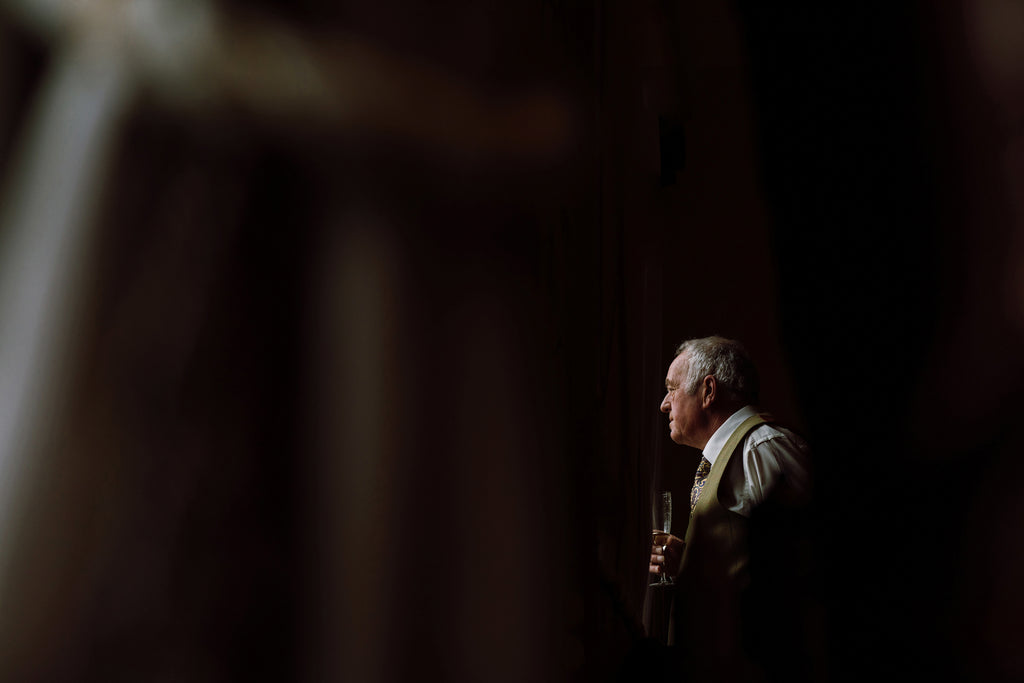 The magic of the silent shutter allows an emotional father of the bride to have his moment of reflection during bridal prep without being distracted or even knowing that he’s being photographed – photo by Chris Johnson.
The magic of the silent shutter allows an emotional father of the bride to have his moment of reflection during bridal prep without being distracted or even knowing that he’s being photographed – photo by Chris Johnson.
 Taking advantage of high ISO capabilities at twilight whilst shooting a gear guide for Outdoor Magic on location in 'The Brecon Beacons' – photo by Chris Johnson.
Taking advantage of high ISO capabilities at twilight whilst shooting a gear guide for Outdoor Magic on location in 'The Brecon Beacons' – photo by Chris Johnson.If you could take just one piece of equipment with you to an important event or trip, what would it be?
Commercially I’d have to say a Sony A7Riii/A7iii and the 70-200mm F2.8 GM as it covers so many options with great image output.
If it were a wedding, I’d go for a Sony A7R4 with a 35mm F1.4 lens. With the Super 35mm Mode (crops the sensor to APS-C internally) that lens would double as a 50mm (56mm) and still deliver plenty of resolution. There are some differences of using a crop mode in camera compared to having access to a separate lens but it’s still a great feature.
For a family trip, I’d go with a Fuji x100 above anything else as it’s so small and delivers such great results. I’ve had mine for years and it seems to be bulletproof, ha.
 With the action shot taking centre stage for the majority of skate editorial, Chris likes to show the viewer a behind the scenes glimpse into the story around the definitive moment. Vans Pro Geoff Rowley clears a path through 'Edge Lane Skatepark' in Liverpool where he grew up skating. Geoff went on to become one of the biggest names in skateboarding during the 1990’s, 2000’s and still has signature shoes with 'Vans' – photos by Chris Johnson.
With the action shot taking centre stage for the majority of skate editorial, Chris likes to show the viewer a behind the scenes glimpse into the story around the definitive moment. Vans Pro Geoff Rowley clears a path through 'Edge Lane Skatepark' in Liverpool where he grew up skating. Geoff went on to become one of the biggest names in skateboarding during the 1990’s, 2000’s and still has signature shoes with 'Vans' – photos by Chris Johnson.
We’re delighted to hear that you’re a Billingham owner, what first inspired you to buy one?
I first noticed Billingham when I was nosing around the old Calumet store in Euston when we lived in London about ten years ago. It took me a while to decide which model and colour would work best. I went for a Hadley Small in black as I wanted something low key because I was using public transport a lot at the time and didn’t want to draw too much attention to myself.

Rianne Evans frontside feeble Coventry – photo Chris Johnson
Which is your favorite Billingham product and why?
I got the Hadley Pro 2020 last year as it’s larger and more useful for my current needs than Small. I’ve found this great when it comes to being in and out of the car and running around on location. The most useful update in the 2020 update of the Hadley Pro is the sleeve that allows me to slip it onto the handle of one of my Roller Bags when travelling through a city.
The design of the Hadley line is perfect for quick access and their appearance helps elevate things a little as far as looking presentable and professional in those more formal situations. It’s also really rugged and water resistant when I’m on some of my more environmentally challenging shoots.
Is there anything you think is missing from the current Billingham line?
I’d love to see a range of camera straps which share the same design style as the iconic bag line.

Chris shooting portfolio work with a trail runner on location in Gloucestershire. Chris is wearing the Billingham Hadley Pro 2020 Camera Bag.
What developments do you believe we will see in the world of photography in the future?
The content of the photograph will always be the most important thing but technology continues to make the physical, technical side of things less of a distraction. The switch to mirrorless over the last few years has already made huge differences to my work flow.

Model Sophie Thorpe at 'The Barbican' shot for 'BMA Models' – photo by Chris Johnson.
What’s next for you? Can you give us details on any forthcoming projects?
I’m continuing to work with a wide range of commercial clients through the challenging period that we’re currently going through. It’s been a tough year for so many, especially in the creative industries.
As far as personal work I’m just trying to do as many self-assignments as possible and continually build on my work. Documenting our family life has become something I’ve taken a lot more seriously over the last few years too as we make a year in review style book for the grandparents each Christmas.

Last shot of the day on a 'Scimitar Sports' summer collection shoot. High ISO capabilities and fast glass increase your window when the light is fading fast. Times like these make you glad you went for the faster lens and upgraded to that newer body – photo by Chris Johnson.
What do you get up to when you’re not out taking photographs?
We’ve been in Malvern for nearly a decade but with so much time away on assignment, I’ve not really had that much time to take advantage of it. We’ve made it a priority to really explore the amazing local landscape and nature over the last year as for the most part, it was the only option. I’ve always got a camera with me (Fuji x100) and these adventures have provided some great experiences that I was able to capture for our family book.
 An early morning shoot with tail runner Matt Walford on Cleeve Hill showing the documentary side of Chris’s fitness work – photo by Chris Johnson.
An early morning shoot with tail runner Matt Walford on Cleeve Hill showing the documentary side of Chris’s fitness work – photo by Chris Johnson.
What was the subject of your last Instagram post?
With Instagram being the main focus as far as seeding out your work to a larger audience, I’ve started to approach it a little differently and use it as a story telling tool. Alongside highlights from commercial works, I’ve started to shoot work specifically for a post. Your personal work, even if it is in line with your commercial work, is your voice and this is a great way of me showing that side of things with some exclusivity.
A recent social media project was shot just before the second national lockdown. I met up with a few pro skaters at a DIY skatepark in the East Midlands to try and capture something fun at a visually interesting location. I’m really happy with how things worked and the it’s been really well received.

The most recent self-assigned social media projects featuring Welsh Skateboard Pro SOX frontside rockslides at a DIY skatepark in Nottinghamshire – photo by Chris Johnson.
Thank you for speaking with us Chris! We really appreciate your time. What advice would you give to those starting out in photography with a view of making it a career at some stage?
When you’re starting out, keep things simple. A single camera and single lens will help you pre-visualize the world around you. Practice every day and put the time in to really mastering the technical as well as the creative side of the craft. Look to get your work critiqued by others who have more experience within your field, this will help you grow faster.
As things start to evolve, having the right gear and understanding the technical science of photography is really important and not to be overlooked. Once these things are second nature, you can concentrate on the true aspects of photography and create with confidence.

Chris Johnson can be found at:
Commercial Photography
Website: www.cj-photo.co.uk
Instagram: @cj_photo
Wedding Photography
Website: www.chrisjohnsonweddingphotography.com
Instagram: @chrisjohnsonweddingphotography
The bags featured in this article









